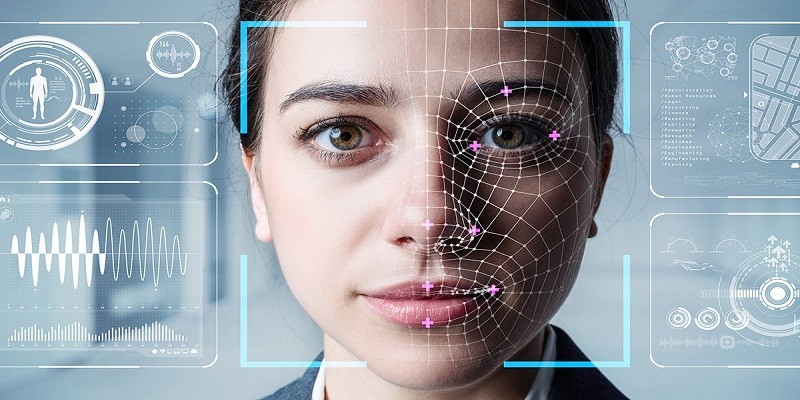Last Updated on May 9, 2025 by Jim C.
Deepfakes are a technology with significant implications due to their ability to create realistic yet fake videos. These videos can be used for various purposes, including spreading misinformation, fraud, and manipulating public opinion.
In a world where information is easily shared and consumed, the potential harm caused by deepfakes is a growing concern. Deepfakes are created using artificial intelligence algorithms to superimpose one person’s face onto another person’s body in videos. This technology has become increasingly sophisticated, making it difficult to detect fake videos with the naked eye.
While deepfakes have gained attention for their potential in entertainment and creative industries, their malicious potential cannot be ignored. We will delve into the technology behind deepfakes, discussing how they are created and their implications on various aspects of society. We will explore the ethical concerns surrounding deepfakes, the challenges of detecting and combating them, and the need for awareness and regulation in addressing this emerging threat. Stay tuned to gain a comprehensive understanding of deepfakes and their impact on our digital world.
The Rise Of Deepfakes
From Novelty To Widespread Use
Initially seen as a novel technology, deepfakes have quickly transitioned to being widely adopted.
Popular Examples Of Deepfake Videos
- Deepfake of Tom Cruise on TikTok
- Mark Zuckerberg’s fake video
- Deepfake Obama speech
The Technology Behind Deepfakes

Deepfakes have become a concerning and controversial topic due to their ability to manipulate and alter digital content, specifically video and audio. The technology behind deepfakes, known as generative adversarial networks (GANs), has opened up a world of possibilities and raised numerous ethical and privacy concerns. In this blog post, we will explore the technology behind deepfakes, with a particular focus on understanding GANs and the audio and video synthesis techniques used.
Generative Adversarial Networks (gans)
Generative Adversarial Networks (GANs) are the underlying technology powering deepfakes. GANs consist of two neural networks – the generator and the discriminator – that are trained together in a competitive and cooperative manner. The generator network tries to create synthetic content (such as images, videos, or audio) that is as close as possible to real content, while the discriminator network aims to distinguish between real and fake content.
The training process involves these networks constantly improving their performance by competing against each other. The generator network learns from the feedback provided by the discriminator network, gradually enhancing its ability to create more convincing and realistic content. Meanwhile, the discriminator network becomes more adept at distinguishing between authentic and synthetic content.
This iterative training process allows GANs to generate highly realistic and believable deepfakes. By leveraging large datasets, GANs learn to reproduce patterns and features present in the training data, enabling them to create accurate replicas of individuals’ faces, voices, or even entire personas.
Audio And Video Synthesis Techniques
Deepfake technology encompasses various audio and video synthesis techniques that contribute to the creation of realistic and convincing fake content. These techniques involve manipulating existing audio or video footage, merging it with synthetic content, or generating entirely new content from scratch.
Audio synthesis in deepfakes involves techniques such as voice cloning and speech synthesis. Voice cloning utilizes a person’s existing audio recordings to create a digital replica of their voice. Advanced algorithms analyze the vocal patterns, intonations, and speech characteristics of an individual to generate synthetic speech that closely resembles their natural voice.
Video synthesis techniques, on the other hand, focus on manipulating and altering facial movements, expressions, and actions. By combining facial tracking with GANs, deepfake algorithms can map the movements of one person’s face onto another person’s face in existing video footage or create entirely new videos from scratch.
These audio and video synthesis techniques, coupled with the power of GANs, have elevated deepfakes to a level where it becomes increasingly challenging to distinguish between real and fake content. The consequences of this technology are profound, as deepfakes can potentially be used for malicious purposes, such as spreading misinformation, blackmail, or enhancing cyberattacks.
Implications Of Deepfakes
Deepfakes, a rapidly advancing technology, poses serious ethical and security concerns. The ability to convincingly manipulate videos has the potential to spread disinformation and harm individuals and society. As this technology continues to evolve, it will be crucial for policymakers and tech companies to develop effective strategies to combat its negative impacts.
Deepfakes, the technology behind them, have significant implications across various domains. With the ability to create realistic manipulated videos, there are concerns about the impact on misinformation and fake news as well as national security. Let’s explore these implications in detail.
Impact On Misinformation And Fake News
The rise of deepfakes poses a significant challenge in the fight against misinformation and fake news. These manipulated videos can be used to deceive the public by spreading false information disguised as authentic content. The implications are far-reaching:
- Increased spread of disinformation: Deepfakes have the potential to spread rapidly through social media platforms, making it harder to distinguish between real and fake videos.
- Undermining trust in media: The presence of deepfakes erodes the public’s trust in media outlets, leading to skepticism and confusion about the authenticity of news and information.
- Difficulty in fact-checking: Deepfakes can be created with high accuracy, making it challenging for fact-checkers to identify and debunk false videos effectively.
- Amplification of confirmation bias: Deepfakes can be used to confirm pre-existing beliefs or biases, reinforcing echo chambers and further polarizing society.
National Security Concerns
Deepfakes also raise significant national security concerns, as malicious actors can exploit this technology for illicit purposes. Here are some of the key implications:
- Political manipulation: Deepfakes can be used to manipulate public opinion during elections or political campaigns, potentially influencing voter decisions and outcomes.
- Damage to public figures’ reputation: Deepfakes can tarnish the reputation of public figures by attributing false statements or actions to them, leading to social unrest and public distrust.
- Threats to critical infrastructure: Deepfakes can be utilized to create believable videos to deceive security systems, potentially leading to threats to national infrastructure and critical services.
- International conflicts and diplomacy: The use of deepfakes in sensitive situations, such as international conflicts or diplomatic negotiations, can escalate tensions and compromise trust between nations.
As the technology behind deepfakes continues to evolve, it becomes imperative for governments, tech companies, and individuals to tackle the potential risks associated with it. Educating the public, developing detection tools, and implementing regulations are crucial steps toward mitigating the negative impact of deepfakes.
Combating Deepfakes
Deepfakes pose significant challenges, requiring proactive measures for detection and mitigation.
Current Efforts And Technological Solutions
In response to deepfake threats, ongoing innovation focuses on AI-based detection algorithms.
- Media forensics tools analyze videos for inconsistencies.
- Blockchain technology can verify the authenticity of multimedia content.
Legal And Ethical Considerations
Addressing deepfake legality revolves around privacy breaches and misinformation implications.
- Regulations require transparency in deepfake creation and usage.
- Ethical guidelines are crucial in avoiding harm to individuals and society.
Frequently Asked Questions
What Are Deepfakes And How Are They Created?
Deepfakes are AI-generated videos using facial mapping and deep learning algorithms.
What Are The Potential Risks Associated With Deepfakes?
The potential risks of deepfakes include misinformation, reputational harm, and privacy invasion.
How Can Individuals Protect Themselves From Falling Victim To Deepfakes?
To protect themselves, individuals can verify sources, use reputable fact-checking sites, and stay vigilant.
What Measures Are Being Taken To Regulate Deepfake Technology?
Regulatory measures include the development of detection tools and legislative efforts to combat malicious deepfakes.
How Can Deepfake Technology Be Used For Positive Purposes?
Deepfake technology can be harnessed for creating digital avatars, dubbing, and special effects in the entertainment industry.
Conclusion
In essence, deepfake technology poses serious ethical and societal challenges. Understanding the implications is crucial. Staying vigilant and advocating for responsible usage is imperative in this evolving landscape. As we navigate this impactful technology, awareness and proactive measures are essential for safeguarding authenticity and truth in media.

